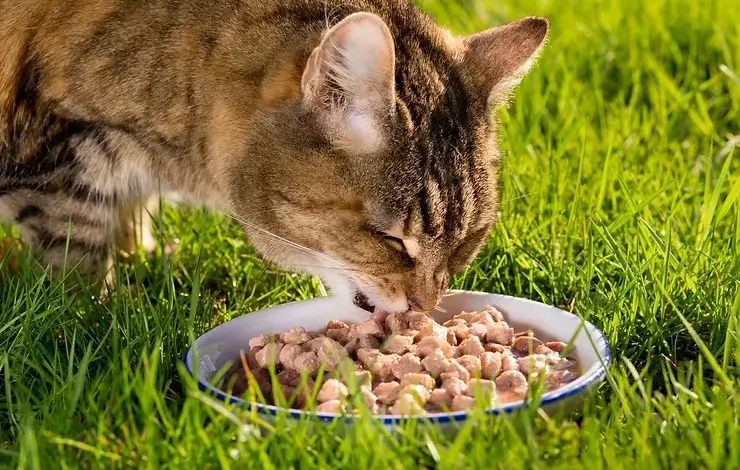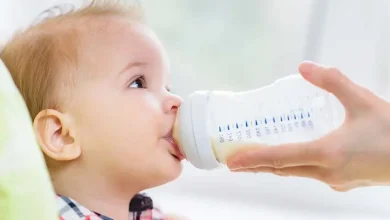Grain-Free vs. Traditional Cat Food: A Guide

As a cat owner, you want to provide the best possible nutrition for your furry friend. With so many cat food options available, you might be wondering about the differences between grain-free cat food and traditional cat food. In this blog post, we will comprehensively explore both types of cat food, delve into the benefits of grain-free cat food, and help you make the best choice for your feline companion.
Understanding Traditional Cat Food
Composition of Traditional Cat Food
Traditional cat food typically contains a mixture of animal protein sources, such as chicken or fish, alongside various grains like corn, wheat, and rice. These grains serve as an inexpensive source of energy and help bind the cat food together.
Benefits of Traditional Cat Food
Traditional cat food often comes at a lower price point, making it a cost-effective option for many cat owners. Additionally, this type of cat food is widely available, so you’ll have no trouble finding it at your local pet store or supermarket.
Potential Drawbacks
One downside to traditional cat food is that it may have a lower meat content. Grains are sometimes used as fillers, which can result in a less nutrient-dense product. Furthermore, some cats may have sensitivities or allergies to certain grains.
Exploring Grain-Free Cat Food
Composition of Grain-Free Cat Food
Grain-free cat food, as the name suggests, does not contain any grains. Instead, it features high-quality animal proteins, such as chicken, fish, or beef, combined with alternative carbohydrate sources like potatoes or peas. This composition results in a cat food with a higher protein content and fewer carbohydrates.
Benefits of Grain-Free Cat Food
Some of the key advantages of grain-free cat food include:
- Higher protein content – As obligate carnivores, cats require animal protein to thrive. As mentioned above, grain-free cat food is formulated with high-quality animal proteins, such as chicken, fish, or beef, which results in a higher protein content compared to traditional cat food. This helps support muscle development and overall health in cats.
- Fewer carbohydrates – Grain-free cat food also tends to have fewer carbohydrates, which is beneficial for cats with specific health needs. For example, some cats may be prone to weight gain or diabetes, and a diet with fewer carbohydrates can help manage these conditions.
- Supports healthy digestion – Some cats may have sensitivities or allergies to grains, which can lead to digestive issues. Grain-free cat food can help reduce the risk of digestive problems by avoiding the use of grains as a main ingredient.
- Quality ingredients – Grain-free cat food is typically made with high-quality ingredients that are carefully selected to meet the nutritional needs of cats. This results in a balanced diet that supports overall health and wellness.
- Customizable options – Grain-free cat food is available in a variety of formulas, including wet and dry food, making it easy to find an option that meets the needs of your cat. Some formulas also include specific ingredients, such as salmon or lamb, to cater to the taste preferences of picky eaters.
Overall, grain-free cat food is a great option for cat owners who want to provide their feline friends with a nutritious and balanced diet. However, it is important to choose a high-quality product and speak with your veterinarian to determine if grain-free cat food is the best option for your cat. Also, grain-free cat food is often more expensive than its traditional counterpart, which can be a concern for some cat owners.
Benefits of Grain-Free Cat Food for Cats with Special Needs
Cats with Allergies
Grain-free cat food can be especially beneficial for cats with allergies or sensitivities to common ingredients found in traditional cat food. By eliminating grains, this healthy cat food option can help alleviate symptoms such as itching, gastrointestinal issues, and skin irritation.
Cats with Diabetes
For cats with diabetes, a low carbohydrate diet is crucial in regulating blood sugar levels. Grain-free cat food typically has fewer carbohydrates than traditional cat food, making it an excellent option for diabetic cats. Always consult your veterinarian before making any significant changes to your cat’s diet.
Cats with Weight Management Issues
Cats struggling with obesity or weight management can also benefit from grain-free cat food. The high protein and low carbohydrate content of this natural cat food can promote healthy weight loss while still providing essential nutrients.
How to Choose the Right Cat Food for Your Cat
Assessing Your Cat’s Needs
To choose the best cat food for your feline friend, consider factors such as age, health, and activity level. It’s also essential to consult with a veterinarian to determine any specific dietary requirements your cat may have.
Balancing Cost and Nutrition
While grain-free cat food can be pricier than traditional cat food, it’s important to prioritize high-quality ingredients that meet your cat’s nutritional needs. Do some research and comparison shopping to find affordable options that still provide the essential nutrients your cat requires.
Grain-free cat food offers several benefits, including higher protein content, fewer carbohydrates, and suitability for cats with allergies, diabetes, or weight management issues. While it may be more expensive and offer fewer options, this natural cat food is worth considering for the overall health and well-being of your feline companion.
Ultimately, the best cat food for your pet depends on their individual needs and your budget. Consult with your veterinarian to make the most informed decision, and remember that providing a balanced diet is key to ensuring a happy, healthy life for your furry friend.











